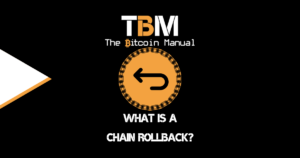Physical Bitcoin Wallets
Home » Storage & Security » Physical Bitcoin Wallets
Bitcoin is a digital asset, which only exists on the blockchain, which makes it hard for people to understand its real-world application. As humans, we can quickly understand something we can see and touch, like cash.
While Bitcoin cannot be migrated into the physical world, the way cash is, it can have physical representations that hold access to Bitcoin on the blockchain.
How a physical wallet works
A physical Bitcoin wallet sets up a private key the same way you would with a non-custodial hot wallet or cold wallet. Hot wallets store the keys live on the device, while cold wallets do not; in the case of a physical wallet, you are storing the keys on a physical means; this could be as simple as a piece of paper or a more robust solution like a throwaway flash drive.

Why you would use a physical Bitcoin wallet?
Physical Bitcoin wallets are often categorised alongside hardware wallets used for cold storage for long term HODLers. However, there are methods of securing Bitcoin to be used for trading in the physical world with instant cash finality.
Using a physical wallet, you can actually hand over ownership of a Bitcoin wallet holding a certain value and settle a transaction in real life, in real-time. You do not need the blockchain to verify this transaction as you are merely handing over the keys and, therefore, the owner of this wallet.
- Physical wallet transfers naturally save you money as you do not need to pay mining fees on the main chain or routing fees on a secondary chain like Lightning.
- Physical wallets can settle immediately without the need for an internet connection or any devices that could be compromised.
- Physical wallets allow you to acquire and trade without the need for KYC and AML as you are performing a peer to peer transaction.
Limitations of a physical Bitcoin wallet
Physical Bitcoin does have its limitations since they are not the easiest wallets to work with and set up. Physical wallets are known to be a little more confusing and complicated than other wallets.
They can be harder to set up, and if the paper is lost and a backup copy hasn’t been produced, there is no way of restoring your access to your Bitcoin.
Paper wallets also have security issues like exposing your keys to a computer or device like a printer that can be compromised and the information intercepted.
There are also trust issues involved, as you do not know if the counterparty has a copy of the keys, which they can use to spend the Bitcoin.
Paper wallets are the most simple implementation of a physical wallet but there are also other physical options that provide added security and make other trade-offs, such as credit sticks and key cards.
Physical Bitcoin wallet options
A paper wallet is an offline mechanism for storing your Bitcoin. Paper wallets are different from so-called hot wallets because they operate separately from the Internet. However, they still do not store physical bitcoins; the paper mention of these wallets refers primarily to access and transfer for the Bitcoin from one owner to another owner.
Paper wallets allow you the flexibility to transact offline and creating several wallets with different amounts of Bitcoin. So instead of carrying all your Bitcoin in one wallet, you distribute your Bitcoin across several keys, stored in different areas or given to different people.
A credit stick is a physical alternative to the paper wallet and is a small USB stick that allows you to spend Bitcoin like you would fiat money.
As in the case of a paper wallet representing access to on-chain Bitcoin, a USB credit stick can be passed along multiple times. Connect to any USB to check balance.
The additional benefit of a credit stick is that wallets can be provably sealed and unsealed anytime to be spent online, reducing the need for trust between parties.
You can find a credit stick with manufacturers like:
- Opendime
Keycards are a physical implementation of Bitcoin that caters to those familiar with using credit cards and debit cards. This physical Bitcoin wallet allows you to manage your Bitcoin via an app and a card that connects with NFC (near field communication).
You would load your Bitcoin into a wallet that can communicate with your card and then you can send and receive Bitcoin via the card and manage your transactions via your smartphone application.
This physical implementation may be more comveinet than the other two but it’s important to note that you are making trade-offs in trust by bringing ina 3rd party service versus the likes of a paper or credit stick wallet.
You can find keycards at manufactures like
- Tangem
Share with a friend
If you thought this information was helpful why not share it on your favourite social media network and encourage others to learn more about Bitcoin
The latest news from our blog

Why Have Bitcoin Fees Been So Low?
In a surprising turn of events for Timechain observers, Bitcoin has managed to maintain relatively low transaction fees despite breaking new all-time highs in value,

What Is Frostr?
Ah, the private key, the single point of failure that will lead to heartbreak for many a Bitcoiner or nostr user who fails to guard

What Is A Chain Rollback?
Ah, the good old blockchain, a buzzword that has been bastardised to death since the launch of altcoins. Bitcoin, like many altcoins, runs on top
